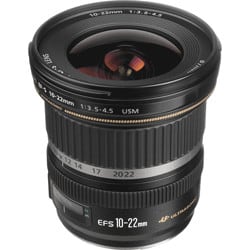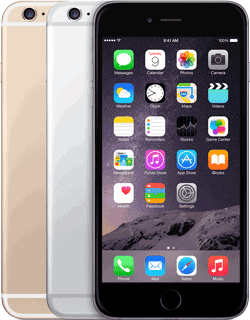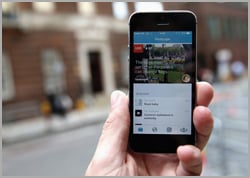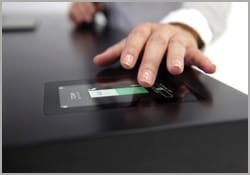Bite-sized news, views and updates from the global tech industry, by Colin White.
THE WIDER PICTURE
 As a keen photographer, I’m often asked for my opinion on which is the best DSLR to purchase, or to impart the secrets required to become a sharper photographer (pun intended).
As a keen photographer, I’m often asked for my opinion on which is the best DSLR to purchase, or to impart the secrets required to become a sharper photographer (pun intended).
The image quality and sensor intelligence of smartphone cameras is constantly improving. These images look great on a small backlit screen, but where they’ll let you down is in print. A phone camera can’t come close to the quality you’ll receive from a DSLR in print – for the time being, at least.
Technically, learning the basic functions of any camera is relatively straightforward; what shouldn’t be taught, in my opinion, is composition. What you decide to frame, and how you decide to frame it, are the most important elements of any photograph.
There’s no substitute for knowledge and practice, but there’s also no shame in having your shiny new DSLR constantly set to the Auto setting.
Many casual photographers are hoping to create photographs that stand out from the crowd, without knowing how this can be achieved. In this instance, the purchase of some new gear can give a new lease of life.
Wide-angle lenses are fun. They remain a staple for professionals, but amateur photographers have stayed away, for whatever reason. For a casual photographer shooting on the go from close range, these lenses will give subjects a completely different perspective.
Contrary to some opinion, the kit lenses supplied with most DSLRs are of good quality. The kit lens will provide you with a solid platform to experiment and will generally provide a focal length range of 17mm (wide) to 55mm (zoom).
Wide-angle lenses can offer a much lower range and give a panoramic, slightly warped look. The exaggeration of relative size they offer can be used to make foreground objects more prominent, while capturing expansive backgrounds.
For Canon cameras, the Canon EF-S 10-22mm f/3.5-4.5 USM and the Sigma 8-16 mm f/4.5-5.6 DC HSM lenses (both approx. €650) are solid choices and will offer great scope for a range of wide-angle styles. There’s also a 10-20mm option by Sigma with a cheaper sticker price. For fans of Nikon, the Nikkor AF-S DX 10-24mm f/3.5-4.5 ED (approx. €825) comes with a good reputation.
Another option is a fisheye lens. Fisheye lenses are ultra wide-angle lenses that produce an extremely exaggerated visual distortion with a very short focal length. The Lensbaby Circular Fisheye 5.8mm f/3.5 is just one example, but there are many on the market.
Both regular wide-angle and fisheye photography are very enjoyable. My advice is to do a little research, test out some lenses and begin taking your distinctive photograph, your way.
Wide-angle lenses can offer a much lower range and give a panoramic, slightly warped look
SAME, BUT DIFFERENT
 The reaction to the launch of Apple’s new tiPhone 6s was one of general ennui amongst both the media and users. So is this new model worth forking out your hard-earned cash on?
The reaction to the launch of Apple’s new tiPhone 6s was one of general ennui amongst both the media and users. So is this new model worth forking out your hard-earned cash on?
The first thing you’ll notice about the new iPhone is how similar it looks to its predecessor – practically identical, in fact.
The most impressive new feature of the iPhone 6s is the ability to shoot slick-looking 4K videos (particularly with the iPhone 6s Plus). The optical image stabilisation technology has undergone an upgrade, resulting in clearer photographs too.
VoLTE (voice over LTE) support is also now available, while iOS 8 has added the ability to make calls over Wi-Fi when coverage isn’t available.
Somewhat surprisingly, Apple has revealed that the price will be the same as the iPhone 6’s sticker price when it was launched last year. The company has also announced its decision to start a new iPhone Upgrade Programme, which will allow owners to update their iPhones every year by committing to a monthly fee.
At the time of print there has been no mention of when the device will go on sale in Ireland or elsewhere in Europe.
The public’s fascination with new Apple products remains, but perhaps our intrigue has now reached a precipice.
BEAM ME UP
 Periscope is a live video streaming app that was purchased by Twitter for a reported $100m in March 2015. The app offers a way to share and watch live video broadcasts from your mobile phone.
Periscope is a live video streaming app that was purchased by Twitter for a reported $100m in March 2015. The app offers a way to share and watch live video broadcasts from your mobile phone.
The app, available on iOS and Android, allows users to discover the world through someone else’s eyes, in what the product’s creators have described as ‘the closest thing to teleportation’.
Teleportation it certainly isn’t, but it is a cool concept that has caught the imagination of many.
For the broadcaster, the app offers an audience, as well as the power of a shared experience. In turn, viewers can influence the broadcaster by sending messages, expressing their approval or disapproval.
Certain issues have arisen with live-streaming sporting events through the app, as viewers can gain access to pay-per-view footage for free.
Policing the actions of users is a difficult task, and it will be interesting to see what the future holds for the use of this kind of technology. As Periscope grows it will face fresh issues, but with Twitter new behind the project it is well positioned to roll with the punches.
REFRESHER COURSE
 The Refresh is an app for those of us who attend frequent business meetings.
The Refresh is an app for those of us who attend frequent business meetings.
The idea behind the app was to create a platform that made networking easy. You can sync Refresh with your Gmail, Facebook and LinkedIn accounts, and the app gives you the ability to review past interactions with the people you’ll be interacting with, or to learn new information about them.
The app is a relationship-builder that can arm you with some additional last-minute knowledge before entering an important meeting.
Using Refresh, you might discover any number of shared mutual contacts, shared interests, or even if a noteworthy event is coming up in a contact’s life.
Essentially, Refresh is the cyberstalking weapon of choice for tech-savvy salespeople. It’s not going to seal a business deal alone, but it could throw you the perfect icebreaker.
STAND AND DELIVER
 The Internet of Things is everywhere, and now it’s even built into desks.
The Internet of Things is everywhere, and now it’s even built into desks.
The growth of intelligent furniture is gathering pace, and the Stir Kinetic Desk M1 is leading the revolution.
If you want to stand while you work, this is how to do it.
As employment in the developed world becomes increasingly based in office spaces, an awareness of the health issues that arise from multiple hours of sitting in a stationary position is vital.
It has a built-in app and touchscreen. It can sense your presence and adapt to your habits over time. You can set goals, turn on reminders, track your progress and extra calories burned, and connect with third-party devices like Fitbit.
A double-tap on the inbuilt touchscreen allows you to change the desk’s position from sitting to standing – its motorised legs can support 150 pounds of dynamic weight.
The desk features, as well as supports, a range of accessories and its auto login feature makes desk sharing easy.
Designers claim the M1 helps users to increase their productivity and wellbeing, and the real money for Stir will come from targeting big companies with plenty of staff, rather than home start-ups.





